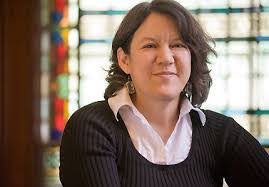S3E13 / In the Eye of the Beholder / David Hemenway, Gary Kleck, Philip Cook, Sara Solnick
The majority of Americans with guns own them for self-defense. But how common is defensive gun use? And what do these self-defense incidents look like?
Note: This season of American Diagnosis was originally published under the title In Sickness & In Health.
This podcast was created by Just Human Productions. We’re powered and distributed by Simplecast. We’re supported, in part, by listeners like you.
Philip Cook: When guns are readily available generally to the public, they’re also readily available for criminal use.
Sara Solnick: A lot of times it wasn’t really a crime.
David Hemenway: So this says that carrying of firearms doesn’t improve public safety. It probably makes it worse.
Sara Solnick: …and it escalated into other people pulling out their guns.
David Hemenway: For the size of the problem, this is the most underfunded area, I think, in public health.
Celine Gounder: Welcome back to In Sickness and in Health, a podcast about health and social justice. I’m Dr. Celine Gounder. This season we’re talking about gun violence in America. Today, we’re going to look at defensive gun use. We’ll hear from experts about how common it is. Then, we’ll take a look at whether having a gun is the best defense… or just the most lethal.
[Phone rings]
David Hemenway: Hello.
Celine Gounder: Hi good morning David. This is Celine Gounder calling.
David Hemenway: Hi how are you?
Celine Gounder: I’m good how are you doing.
David Hemenway: I’m glad it’s Gounder and not “go under.”
Celine Gounder: [laughs] It’s funny that you say that, my father used to say go under when he was explaining to people how to spell it. [laughter]
Celine Gounder: This is David Hemenway.
David Hemenway: I’m a professor of health policy at the Harvard Chan School of Public Health and I direct the Harvard Injury Control Research Center.
Celine Gounder: David does a lot of research on gun violence and prevention from a public health perspective. Public health doesn’t focus on individual cases. It’s about looking at the health of an entire population.
David Hemenway: I would say it is trying to create a world where it’s easy to stay healthy and difficult to get sick or injured.
Celine Gounder: One of David’s projects is a survey of gun researchers. The idea is to get a sense of what the experts generally agree on. He’s been doing it since May 2014.
David Hemenway: Yes. Every month I have been surveying gun researchers. To get on the survey, you had to be the first author of a peer-reviewed journal article in the past five years. Typically, I ask one question, make a statement and say how strongly do you agree or disagree with this and how good is the literature on this, how strong is the literature and do you personally feel that you know about this one particular issue, that you’re an expert on this particular issue?
Celine Gounder: One of those questions is: How often are guns used in self defense?
Celine Gounder: What do we know about self-defense gun use?
David Hemenway: Not as much as we should.
This number matters. It gives us an idea of how many people are using guns to protect their lives or property. If it’s a big number, that means there may be good reason for more people to carry guns.
Celine Gounder: Sara, as I think I mentioned in my initial email to you, most of my questions are really going to be focused on self-defense gun use, and the, I think it was, 2015 paper you and David Hemenway wrote on that topic.
Sara Solnick: Okay, good, because I studied them.
Celine Gounder: Good. [laughter]
Celine Gounder: This is Sara Solnick. She’s a professor at the University of Vermont. And, like she just said, she co-authored a paper with David Hemenway on self-defense gun use.
Sara Solnick: There’s a lot of controversy about self-defense gun use because it is a pivotal reason for people to own guns. … How common is it for people to actually use their guns in self-defense, which is what so many people say they’re owning guns for that purpose. Of course, you can read about anecdotes and individual instances, but we want to get a really population-based measure.
Celine Gounder: So Sara and David looked to the biggest data source they could find: The National Crime Victimization Survey.
Sara Solnick: This is a survey that the Department of Justice does. Any time that you see news reports about the crime rate, it’s from this study… There’s a lot of good data there about crime.
Celine Gounder: This gets a little into the weeds, but it’s important. The Bureau of Justice Statistics has been interviewing Americans about criminal victimization since the 1970s. Almost 225,000 people every year. Respondents get asked detailed questions about crime they might have experienced. If you hear a national crime stat on the news, it’s likely coming from this survey. So, Sara and David went through data between 2007 and 2011, and pulled out the relevant examples. Here’s what they found.
Sara Solnick: We had 14,000 incidents. It was actually 14,145 incidents of crime across the years that we looked at. In less than 1% did the victim use a gun in self-defense. It was 0.9% of incidents.
David Hemenway: We know that there aren’t that many self-defense gun users. That it seems like less than 1% of contact crimes in the United States, there’s a person used a gun in self-defense.
Celine Gounder: So take that percentage—0.9% of crimes—and scale it up to the nation. You’re talking about roughly 100,000 instances of defensive gun use per year in a country of almost 330 million. Not all that common. But what if the estimate wasn’t 100,000? What if it were 2.5 million?
Gary Kleck: We got an estimate of about 2.5 million defensive gun uses per year or at least in the year prior to our survey, which was many times the number of crime committed by offenders using guns for offensive purposes.
Celine Gounder: This is Gary Kleck.
Gary Kleck: …and I’m a retired professor of Criminology and Criminal Justice at Florida State University.
Celine Gounder: In 1993, Gary decided he would try to get a handle on how many defensive gun uses there were. Instead of using the National Crime Victimization Survey, Gary developed his own.
Gary Kleck: It was a national telephone survey, like a random representative sample of the US adult population, age 18 and over in which 4,977 adults were interviewed. They were asked about whether they had in the past five years used a gun for self-protection. Then among those who said yes, a long series of questions were asked to establish where was this in the past year? What kind of gun was used? What kind of crime was being defended against or the circumstances? The location where the crime occurred. Then the results of that survey were an estimate that each year in the US or at least in that period, over 2.5 million people would use the gun for self-protection against crime.
Celine Gounder: Gary did a national random telephone survey of 4,997 adults. He asked if they’d used a gun in self-defense in the last 5 years. If they said yes, the respondents were asked a bunch of follow up questions about the event. From that sample of about 5,000, Gary estimated there were as many as 2.5 million instances of people using a gun in self-defense. Gary compared that number with the number of recorded criminal gun uses. According to Gary’s work, way more people were using a gun to stop a crime than criminals were using to commit a crime. His findings suggested guns might be making people safer. But that’s a huge difference in numbers: 100,000 vs. 2.5 million. How did Gary get such a different number? It all comes down to how you ask the question… and how you define defensive gun use. Gary’s survey asked each and every respondent whether they’d used a gun in self-defense. The Crime Victimization Survey doesn’t. And for Gary, this is key distinction.
Gary Kleck: Nobody in the NCVS has ever been specifically asked, “Did you use a gun for self-protection?” The only way they can report it in that certain way, is if they’re bold enough to volunteer that highly controversial detail in response to that very general open-ended question, the non-specific question, “Did you do anything to protect yourself?” About 21 national surveys that indicate huge numbers of defensive gun uses and exactly one that indicate very few and that is the NCVS.
Celine Gounder: Gary’s critique boils down to: if you want to know about gun use, you should ask about it specifically. How a question gets asked… matters. Since his survey was released in 1995, Gary has done a lot of research into how and why people would underreport or misreport about being the victim of a crime… or…. using a gun in self-defense. In 2018, Gary did another survey—this time over the Internet—that looked at how people answer questions differently depending on how they’re asked. He found that respondents were more than twice as likely to report a defensive gun use when they were asked about it specifically. That’s compared to someone being asked generally about being the victim of a crime and then an open ended question about what they did. So Gary doesn’t like the National Crime Victimization Survey. He thinks the way its carried out leads to underestimates of victimization… and… of defensive gun use. Gary points out that there are other things to consider when looking at the Crime Victimization Survey:
Gary Kleck: you have to in effect, you’re telling the government, that, “Yes, I possess a gun and, yes, I either pointed it at or attacked another human being with this gun exactly.” You can imagine this is not something that a lot of people are interested to tell me, the federal government interviewer.
Celine Gounder: Gun owners generally have lower levels of trust in the government than do others. Maybe, Gary says, they don’t want the government knowing they have a gun. Or maybe… they knew their attacker… perhaps intimately… and didn’t think or want to report that. One point that Gary and his critics can agree on: someone may be breaking the law when they use a gun in the name of self-defense. But the person with a gun may not simply be breaking the law by carrying a gun where they shouldn’t… or because they aren’t licensed to carry… or because they’re using someone else’s gun. They may actually… be… the aggressor.
Philip Cook: …it is clear that the survey he was looking at, and other surveys like it, produce heavily biased results that they tend to grossly inflate the true number of what we would think of as defensive gun uses, that are in any sense legitimate, rather than being just outright crimes.
Celine Gounder: This is Philip Cook. He’s a professor at Duke University. He studies gun violence and gun violence prevention. He’s also a critic of Gary Kleck’s work. Where Gary sees a weakness in the Crime Survey—that it doesn’t ask about gun use specifically—Philip sees an advantage.
Philip Cook: The other thing that the crime survey does is that before it asks people whether they use the gun in self-defense, it asks them whether they were the victim of a crime. If they say no, they are never given a chance to say that they used a gun self-defense. The survey Kleck used did not have that screening possibility.
Celine Gounder: If there was no crime, why would you have used a gun to defend yourself?
Philip Cook: You get, for example, people say, “Yes, I used the gun in self-defense.” “Well, what happened?” The answer is, “Well, I heard a sound outside my bedroom door. I took my gun and fired to it;” Or “I was looking out my window and I saw a couple of kids standing near my car. I took my gun, pointed it at them and told them to go away.” … Those kinds of events then figure in very importantly to that two and a half million, which are often actually people admitting to a crime they committed with this gun inflict that correctly rather than a legitimate self-defense use.
Celine Gounder: Sara Solnick makes another point that we’ve looked at earlier this season. A threat is in the eye of the beholder—legitimate or not.
Celine Gounder: Is it possible that in these private surveys, as you were describing, some of the differences in methodology that how people define self-defense may be also a big factor here, that you’re including a lot more under “self-defense” in some of these private surveys?
Sara Solnick: Yes. I think it definitely leaves it up to the beliefs of the person that you’re interviewing, because you didn’t establish that there was any crime, so people can say that it was an incidence in self-defense without anything ever happening but they can say, “I really needed my gun on that day.”
Celine Gounder: OK, we’ve looked at how common defensive gun uses are. So when a gun is used, how effective is it at protecting us? Sara Solnick and David Hemenway also looked at whether guns prevented injury or loss of property. Let’s start with whether having a gun helped someone avoid injury:
Sara Solnick: The percent of victims who were injured after they attacked or threatened the other person with a gun was 4.1%, and for all other things it was 4.2%. It’s pretty even in terms of your probability of going on to be injured afterwards.
Celine Gounder: So having a gun only marginally improved your odds of avoiding injury. That’s interesting, considering so many people say they want gun for protection.
Sara Solnick: I think that’s what is really the essential important finding of this study, which is that it’s so uncommon, and that a lot of other actions that you could take were equally effective. It’s not like if you didn’t have a gun you would be helpless. It’s not like if you didn’t have the gun anybody could do anything they wanted to you. People in those horrible moments, they fight back in some way or they figure out the best way for them to survive or escape injury, and a lot of times those actions work as well as for that tiny percent of people that use their guns.
Celine Gounder: Philip Cook:
Philip Cook: Based on that, there are, of course, some people who say, “Yes, I defended myself with the gun,” and others that use the different weapon, many more who screamed or ran away or reasoned with the attacker. It’s very hard to see any advantage for gun from those data, in terms of the likelihood that the victim ends up being injured. That was true in Kleck’s data. It’s true when I looked at similar data that’s what we have.
Celine Gounder: OK, so what about property crimes?
Sara Solnick: We did find that it was effective with property crimes. We’re not just looking at whether the gun use was effective but how did it compare to other things that people did in these circumstances. When I say that it was “effective” with the property crimes, we’re comparing it to all those other kinds of actions that people took. So they were less likely to lose something when they used a gun compared to some of the other actions.
Celine Gounder: Actions like using a knife, or a baseball bat, or something else—like screaming or running away. David and Sara found that 39% of people who tried to protect themselves with a gun lost property during an attempted robbery or burglary. That compares to only 35% of people who lost property when they used a weapon… other… than a gun. So guns… didn’t prevent theft… any better… than did other weapons.
David Hemenway: We know that there are maybe thousands, maybe tens of thousands of self-defense gun users in the United States but the evidence seems to indicate that there’s so many other things you could do to protect yourselves equally well without a gun as with a gun. The problem is that bringing a gun into your house or carrying a gun really increase increases your risk of lots of problems such as suicide, homicide and unintentional firearm injury as well as getting your gun stolen and then being used by other people.
Celine Gounder: That last line matters. Remember that David and Sara are looking at this through a public health lens. Do the risks of having a gun in your home—suicide, homicide, gun-related accidents— outweigh the benefits of having it for your protection? And then there’s another risk: having a gun might actually attract crime.
Philip Cook: One area that I looked at with Jens Ludwig was the question of residential burglary…
Celine Gounder: Philip Cook again.
Philip Cook: We studied that topic simply because there had been a lot of discussion over the years that neighborhoods where a lot of the homeowners were armed did not have to worry about burglary because the burglars would be scared to break in there for fear of meeting the owner locked and loaded.
Celine Gounder: Common sense, right? Don’t risk a burglary when you could be looking down the barrel of a gun. But this is a case where common sense… didn’t play out in the numbers.
Philip Cook: In fact, the guns that were supposed to be protecting homes were actually having that reverse effect.
Celine Gounder: Philip Cook Instead, what we found was the areas with higher rates of gun ownership actually had higher rates of burglary than areas with lower rates. That was after adjusting for other factors that influenced the burglary. It seemed pretty clear once you think about it, that homes that had guns in them are attracted targets to burglars because their guns are easy to steal, easy to carry out and readily sold for high prices. Gun advocates often point to another idea that again sounds like common sense: More guns means people will behave better because the alternative is… well… getting shot. This is sometimes called the “polite society” argument.
David Hemenway: There the evidence seems to be very, very strong.
Celine Gounder: That was David Hemenway again. Studies have found that a gun does… indeed… change the way people behave… just not always in the best way.
David Hemenway: Yes, two things. One, there actually is an incredible literature … that indicates just showing people guns changes their behavior, changes their attitudes, makes them more aggressive.
Celine Gounder: There might be “good guys with guns” out there… but gun owners are “good guys with guns” until… well… they’re not. Take the case of a young woman shot and killed in a road rage incident in Pennsylvania in 2018.
David Hemenway: What we found is that the people who are carrying guns in cars are just the completely wrong type of people. They are people who have lots of other problems. They’re more likely to drive badly, and they’re more likely to get angry, and they are more likely to give other people the finger, they’re more likely to illegally follow too closely. Not surprisingly, we have a number of times that people have these road rage incidents, and somebody pulls out a gun.
Celine Gounder: David’s research found similar results when he looked at colleges with campus carry. His study asked about concealed carry alongside questions about college drinking.
David Hemenway: What we found out is who have guns on college campuses were, again, the people you’d rather not have guns. These were people who were—we had all the alcohol questions—they were likely to abuse alcohol in every possible way you could imagine. They were more likely to drink and drive, they are more likely to be alcohol eye-opener in the morning, there are more likely to get in fights because of alcohol and on and on and on. It was not the type people one would hope would have had guns in college.
Celine Gounder: Another example that comes to mind is a shooting that happened in a Florida movie theater in 2014. It started as a simple argument about texting during a movie. But then… things got heated. One guy threw popcorn. The other guy… a retired police officer… shot him. The presence of a gun—whether in a car, a college classroom or a movie theater— shows little direct benefit when it comes to personal protection. But without a doubt… it dramatically increases the chance that someone is going to get hurt or even die.
David Hemenway: What we know is that where there are… fewer guns there’s many fewer gun deaths. Guns aren’t protecting us. Guns are putting us at risk.
Celine Gounder: The most common reason for Americans to own guns… is self-defense. But what we know about defensive gun use… is based on self-report… in government and private surveys… none of them perfect. Surveys will measure what they’re designed to measure. Our data are limited by how people answer questions… and what constitutes self-defense. It can depend on where you are… in a duty-to-retreat state… or a stand-your-ground state… and even then… it may all come down to… what’s self-defense… in the eye of the beholder. It’s one of the many reasons why there’s so much disagreement on whether guns make us safer… or not.
Celine Gounder: In our next episode we’re going to ask “what is it about guns?” that’s different? As a means… as a tool… or as an instrument… and why that difference matters.
Celine Gounder: Today’s episode of “In Sickness and in Health” was produced by Zach Dyer and me. Our theme music is by Allan Vest. Additional music by The Blue Dot Sessions. You can learn more about this podcast and how to engage with us on social media at insicknessandinhealthpodcast.com. That’s insicknessandinhealthpodcast.com. If you like what you hear, please leave us a review on Apple Podcasts. It helps more people find out about the show! I’m Dr. Celine Gounder. This is “In Sickness and in Health.”








